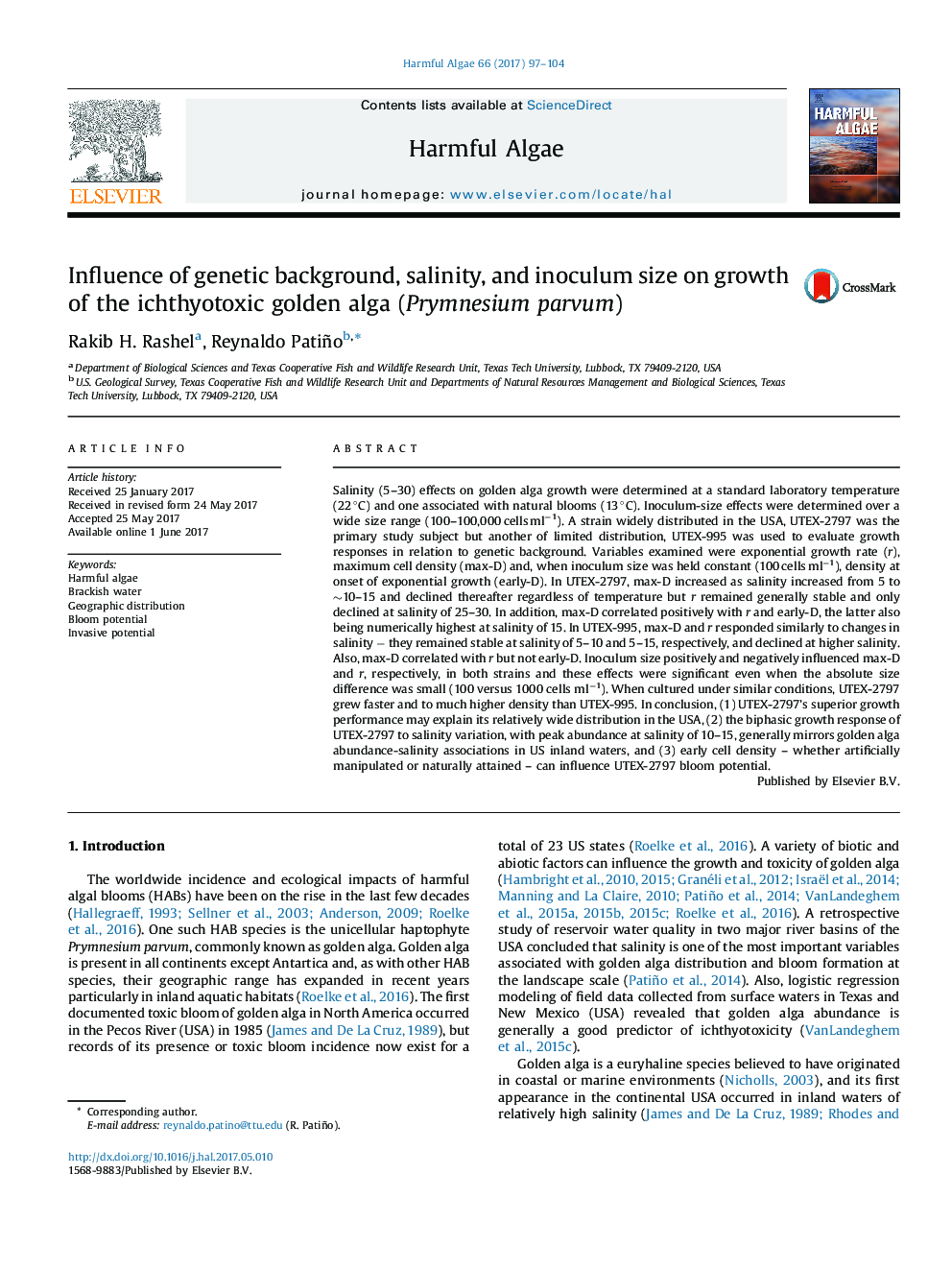| Article ID | Journal | Published Year | Pages | File Type |
|---|---|---|---|---|
| 5765787 | Harmful Algae | 2017 | 8 Pages |
Salinity (5-30) effects on golden alga growth were determined at a standard laboratory temperature (22 °C) and one associated with natural blooms (13 °C). Inoculum-size effects were determined over a wide size range (100-100,000 cells mlâ1). A strain widely distributed in the USA, UTEX-2797 was the primary study subject but another of limited distribution, UTEX-995 was used to evaluate growth responses in relation to genetic background. Variables examined were exponential growth rate (r), maximum cell density (max-D) and, when inoculum size was held constant (100 cells mlâ1), density at onset of exponential growth (early-D). In UTEX-2797, max-D increased as salinity increased from 5 to â¼10-15 and declined thereafter regardless of temperature but r remained generally stable and only declined at salinity of 25-30. In addition, max-D correlated positively with r and early-D, the latter also being numerically highest at salinity of 15. In UTEX-995, max-D and r responded similarly to changes in salinity â they remained stable at salinity of 5-10 and 5-15, respectively, and declined at higher salinity. Also, max-D correlated with r but not early-D. Inoculum size positively and negatively influenced max-D and r, respectively, in both strains and these effects were significant even when the absolute size difference was small (100 versus 1000 cells mlâ1). When cultured under similar conditions, UTEX-2797 grew faster and to much higher density than UTEX-995. In conclusion, (1) UTEX-2797's superior growth performance may explain its relatively wide distribution in the USA, (2) the biphasic growth response of UTEX-2797 to salinity variation, with peak abundance at salinity of 10-15, generally mirrors golden alga abundance-salinity associations in US inland waters, and (3) early cell density - whether artificially manipulated or naturally attained - can influence UTEX-2797 bloom potential.
